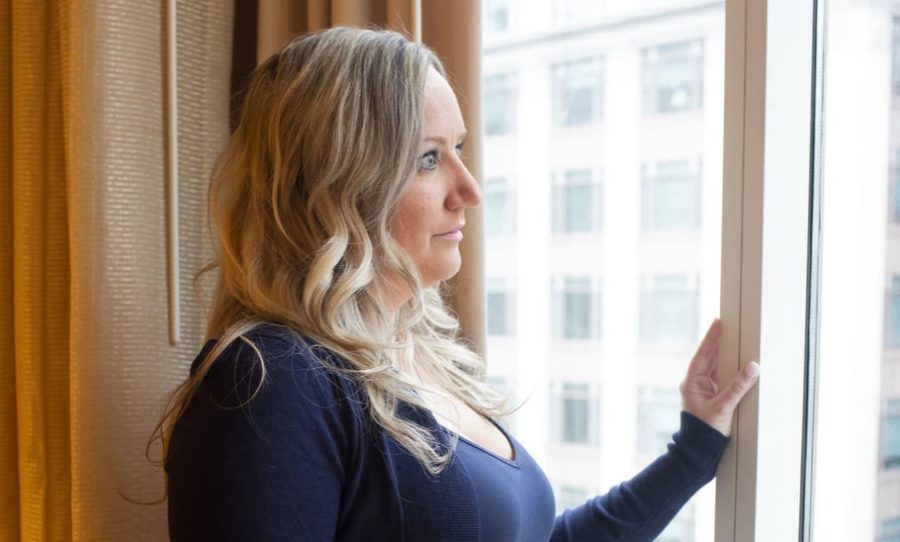He Took Care of Everything – But Now He’s Gone
Tom adored Becky. She was at the center of his new life. His best life. They met when his post-military career was really starting to take off. Twelve years younger, she made him feel alive again; more capable, more confident. Second chances are rare in life, and she gave him a second chance to be a husband. A second chance to be a father. Taking care of her and their daughter Tammy wasn’t just his duty, it was his privilege.
That’s how it seemed anyway. I never met Tom. He had died about a year before I met Becky. Cancer took him at 72. Too soon. Everything I know about him I learned by talking to Becky and looking over the legacy he left behind.
I was volunteering at a city-run financial literacy program. The program director called me and said she had a special case and could I please take it. She knew I was fresh off passing the CFP® exam and thought my specialized training might be beneficial. I was new to this volunteer gig and was tickled the program director even remembered my name. Of course I agreed.
This was a free program designed to teach basic personal finance skills. The typical clients had accumulated debt, but were looking to turn their lives around. The program delivered essential education and coaching to help them toward financial empowerment. My role was as a coach. I would meet with a client once a month for ten straight months to help reinforce the lessons they had learned in the classroom portion of the program.
I had no idea what to expect from Becky. All I had been told was that her issues were a bit different than the typical client. Our first meeting was a real eye-opener. We exchanged some pleasantries and I discovered that she worked in the public school cafeteria.
She seemed hesitant to talk to me. That’s not uncommon. Talking to a stranger about your finances is an unnatural act. Her trust issues seemed a bit deeper, though. About halfway through that first meeting she mentioned she had been widowed and was unsure about the best way to manage the accounts she had inherited. Tom always handled all that stuff. Handling it was new to her.
She opened a 3-ring binder she had brought with her. She was leafing through it looking for a specific piece of information. Strangely, I saw my picture on one of the pages. I realized it was my Linked-In bio, printed. “You’re doing your homework on me, I see!” I said with a grin.
Smiling back she said, “I showed this to my neighbors and told them I’m meeting this guy at the library tonight, if I disappear, he did it!”
Yeah – those trust issues might be running kinda deep.
By the end of that first meeting I had established why Becky was different than the other clients of this program. Tom had left her nearly $2 million in securities and over a million in real estate equity. Despite this wealth, Becky was struggling to get her daughter through college and to make ends meet. The only millionaire lunchroom lady in America was trying to learn how to manage money from a free program designed to teach people how to get out of debt!
He Set Everything Up, And She Was Afraid to Make Any Changes
We spent the next meeting digging a bit deeper into the accounts. About half the equities were in retirement accounts, the other half in accounts with no particular tax advantages. The most alarming thing, however, was that fully 90% of it was in a single company stock – the company Tom had worked for after he retired from the military. A concentration of stock in a single company like that is highly risky and simply HAD to be addressed.
The real estate was also troubling. She owned two houses outright (no mortgages). She was living by herself in a 4,500 square foot, 5-bedroom home in a very nice part of town. There was no mortgage, but the taxes and upkeep were taking all her available cash flow. At one of our meetings she told me she had been living just in the upstairs of the house because the heat downstairs was broken and she couldn’t afford to fix it.
The other house was across town. Vacant. Not a rental property. Not a home. Just an empty, dead, cash-consuming liability.
She also owned four vehicles. The car she drove and three others. Tom’s cars. I asked why she didn’t sell them. She just shrugged and smiled.
She was 61 years old, so she could have tapped into the retirement accounts she had inherited from Tom with no tax penalties. She was afraid to, though. She wasn’t sure how to do it without causing a tax problem. I told her I could help with that, but she resisted.
About halfway through our 10 months together I decided to tackle the issue of so much of her portfolio being in a single company stock. I proceeded gently and cautiously. By then I had realized I was dealing with issues larger than education. Tom was the only man she’d ever trusted. While I had been slowly building trust over the previous months I knew it wasn’t even a faint shadow of the trust she still had in him.
I spent a lot of time preparing my presentation to her. I knew I was only going to get one shot at it. I showed her some graphs and anecdotes on the risks of a single stock portfolio. I explained it thoroughly and clearly, breaking it down in the simplest terms I could come up with. Then I concluded with my clinching line, “You know, Tom built this marvelous portfolio for you and Tammy. He didn’t do it so you could live in the upstairs of your house and work in the school cafeteria. He would want you to enjoy it, and he certainly wouldn’t want you to take extreme risks with it.”
She paused a little, but in the end my knowledge and pleading were no match for Tom’s memory. Tom always knew what to do. He wanted the portfolio in that stock, and that’s where it was going to stay. I tried not to take it personally.
What I did take personally, however, was in month 8 or 9 when she came in with brochure for a variable annuity. Being in a well-to-do part of town, she had received a mailer for a free dinner to discuss retirement planning. She had attended. “This seems like a pretty good deal to me,” she said handing me the brochure. I just wanted to bang my head on the table. I had been working to build trust with her for most of a year, and this salesman had her in one dinner! Ugh! She had already purchased a really horrible long term care policy, so fortunately I was able to talk her out of the variable annuity. (Although it would have been better than the single-stock portfolio.)
At the end of our 10 months together we parted ways. I offered to take her on as a paid client at my brand new financial planning firm, but she declined. She thanked me for my time and for helping her learn about finances.
Would Things be Different if Tom Had Trusted Us?
I have thought about her often, wondering if she still has 4 cars and an empty house rotting across town. Wondering most about how that portfolio is faring, since that single stock she owned was General Electric, and it has lost two-thirds of its value over the past few years. If she stayed in it her $2 million portfolio is more like a $700K portfolio now.
I also wonder what it would have been like if Tom had introduced us before he died. How things might be different if he had brought Becky into our office and said, “These guys are alright. If anything happens to me I want you to look them up and have them advise you about the finances. They’ll take good care of you and Tammy.”
If Tom had trusted us, Becky would also have trusted us. If Tom had trusted us she wouldn’t be living in the heated half of the house and working in the school cafeteria. If Tom had trusted us he would still be taking care of Becky and Tammy through us. And it wouldn’t be our duty, it would be our privilege.

